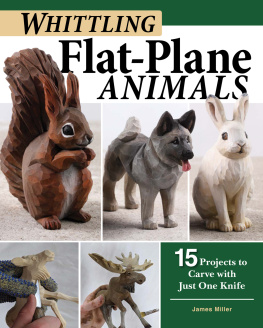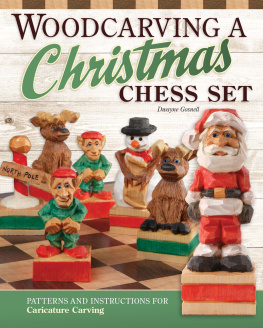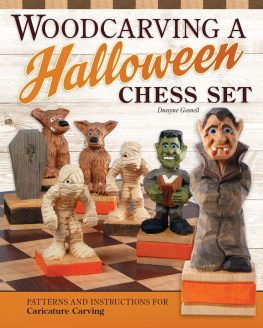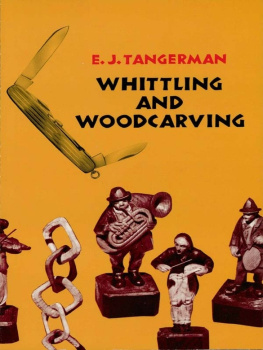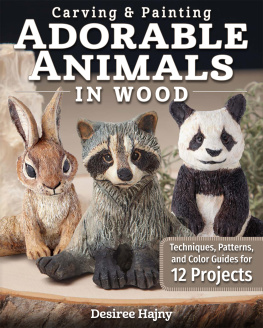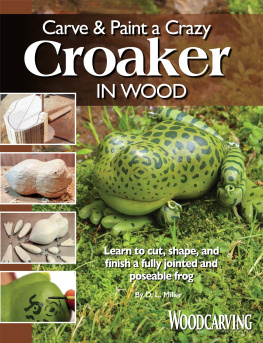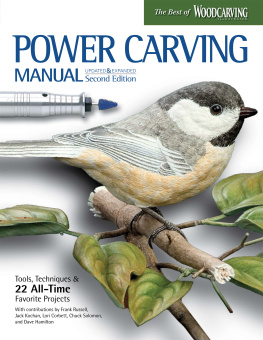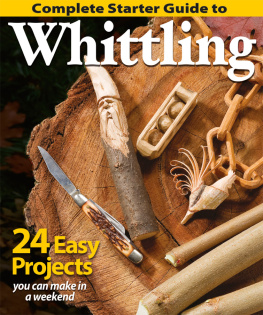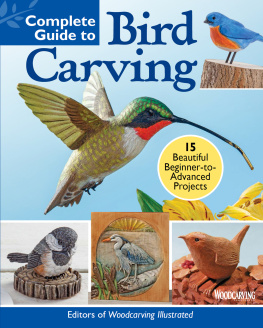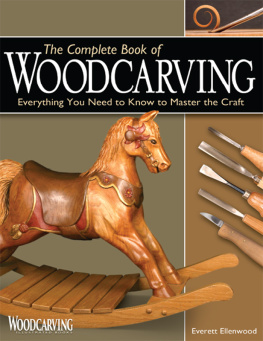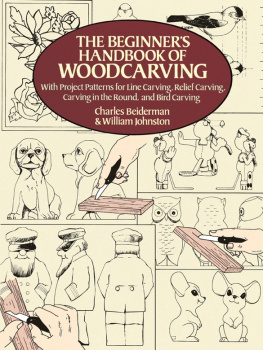Contents
Guide

Dedication
In memory of Dave Fowler, who channeled my urge to create woodchips into an everlasting passion.

Acknowledgments
Thank you to all the people who have supported me along my carving journey. The members of my hometowns carving club were instrumental in providing the instruction and support that I needed as a young child eager to immerse myself in the woodcarving world, and their support continues to this day. Those who invite my trail of woodchips at local gatherings and festivities push me to create more and allow me to share my passion for handcraft with others. And of course, none of this would likely be possible without Harley Refsal, friend and reviver of the flat-plane style.
Tusen takk (a thousand thanks) to my Scandinavian friends for providing invaluable feedback on which animals should be represented in this book and for providing stories and context for what makes them so important.
All step-by-step photos in this book are taken by my beloved girlfriend, Allison Cully. Without her, life would not be as beautifulpartially because I would have needed to grow a third arm.
2020 by James Miller and Fox Chapel Publishing Company, Inc., 903 Square Street, Mount Joy, PA 17552.
Whittling Flat-Plane Animals is an original work, first published in 2020 by Fox Chapel Publishing Company, Inc. The patterns contained herein are copyrighted by the author. Readers may make copies of these patterns for personal use. The patterns themselves, however, are not to be duplicated for resale or distribution under any circumstances. Any such copying is a violation of copyright law.
For a printable PDF of the patterns used in this book, please contact Fox Chapel Publishing at , quoting the ISBN and title of this book, as well as the pattern or patterns required.
Print ISBN 978-1-4971-0115-9
eISBN 978-1-6076-5819-1
To learn more about the other great books from Fox Chapel Publishing, or to find a retailer near you, call toll-free 800-457-9112 or visit us at www.FoxChapelPublishing.com.
We are always looking for talented authors. To submit an idea, please send a brief inquiry to acquisitions@foxchapelpublishing.com.
Because working with wood and other materials inherently includes the risk of injury and damage, this book cannot guarantee that creating the projects in this book is safe for everyone. For this reason, this book is sold without warranties or guarantees of any kind, expressed or implied, and the publisher and the author disclaim any liability for any injuries, losses, or damages caused in any way by the content of this book or the readers use of the tools needed to complete the projects presented here. The publisher and the author urge all readers to thoroughly review each project and to understand the use of all tools before beginning any project.
Preface
As a child, I always wanted to become an author. In preschool, I began creating books of my own that told stories of imaginary creatures having crazy adventures. Most conclusions dealt with the characters returning home and relaxing. I must have known, even then, that all the toil and excitement of daily life needs some balancing out. My creative attention soon turned to woodcarving, and as I entered middle school, I discovered that woodcarving could provide my life with the balance it needed.
Countless woodchips later, I am being presented with one of the most exciting opportunities of my life: constructing an actual book for Fox Chapel. Although I have previously made and distributed a book on Scandinavian-style figure carving, the copies were black and white, stapled together, and not professionally designed. After all, it started as a collection of pamphlets to be used in classes I taught. With the help of Fox Chapel, this book will be able to provide an even more lucrative experience for seasoned carvers, beginner carvers, and those who have never carved before but would like to.
I know from numerous public carving demonstrations that there are plenty of people who are interested in taking up a handcraft. Even in todays technological world, word is spreading that directing your eyes to your hands rather than glowing devices can be calming and healthy for the soul.
Previous books on flat-plane carving have done a great job promoting the style as something that is accessible and inviting to all, regardless of skill level. This book does not aim to waver from that, nor does it aim to twist the flat-plane tradition in a direction it has not already historically frequented. Rather, this book aims to shine a spotlight on another major area of flat-plane carving: representing animals in wood. While many flat-plane carvers today like to carve European immigrants from the past, the flat-plane tradition originally focused on carving people and animals the carvers saw in their daily lives.
I specifically chose a selection of animals that would be, for the most part, familiar to much of the Western world. Many Scandinavian animals are nearly equivalent to those in the northern regions of North America. Carving familiar subjects ensures that you have some frame of reference from the start, and it also allows an artist to focus on features they think are important in order to create a proper representation. If one had never seen a rooster, but heard it had a red comb, one could easily miss important details and end up creating a sparrow-chicken hybrid. That could make for an interesting piece, but this book intends to encourage thoughtful and appreciative reflections of the natural world. Animals are amazing, and they have provided endless inspiration and direct utility to humanity since the beginning of human history. A sparrow-chicken hybrid would, however, be a great subject for a future book! For now, I will focus on hybridizing three of the things I love most in this world: animals, woodcarving, and Scandinavian culture. In doing so, I hope to encourage you to explore your passions as well.

My first animal carvings, a pig and an owl.
Table of Contents

Wooden Animals: A Selection of Scandinavian Culture
Strictly speaking, Scandinavia is made up of the countries Norway, Sweden, and Denmarkyet the term is often used more broadly to include other Nordic countries such as Iceland and Finland. Regardless, these countries share related geography, history, languages, and other cultural elements. For the purpose of this book, the term will be used without specific distinctions. While Scandinavia may not be the most common vacation destination for those without Scandinavian ancestry, the general public seems to understand a few basic facts about these countries: mountainous terrain, cold winters, and sing-songy speech patterns. And, of course, Scandinavia is also known as the home of the Vikings. What many may not know is the important role that wood, animals, and wooden animals have played in the region throughout history.

